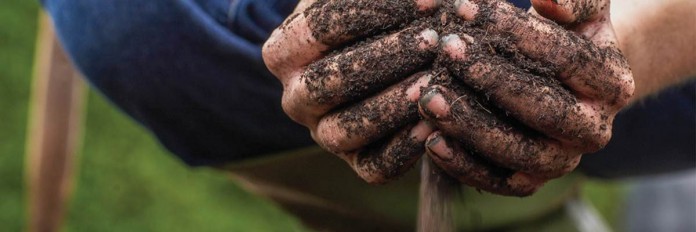SPRINGFIELD, Ohio — As gardeners and homeowners throughout Ohio rev up their lawnmowers and get out their spades for the 2015 season, probably the last thing on their minds is the toxic algae bloom that shut down Toledo’s water supply last September.
But they are interconnected, said Pam Bennett, Ohio State University Extension horticulture educator and director in Clark County and statewide Master Gardener Volunteer Program coordinator.
“The algae issues in Lake Erie and Grand Lake St. Marys that people have been hearing about are related to nutrients that aren’t used by plants and end up washing into the watershed,” Bennett said. “Homeowners can do their part by knowing inputs and outputs — knowing what fertilizer to put into their soil to get the maximum output without guessing.
“There’s an old saying, ‘Don’t guess, soil test,’ and that still applies today.”
Extra fertilizer adds up
Even people with small lawns and gardens contribute to algae problems if they over-fertilize or if they leave fertilizer granules on sidewalks or driveways where they can easily wash into waterways, Bennett said.
“It all adds up,” she said. “You might think, ‘My little patch is no big deal.’ But everybody’s patch adds up to a lot.”
Farmers test their soil every few years or even annually, Bennett said, because they don’t want to put too much fertilizer on their land — which would waste money and harm the environment. But most home gardeners don’t soil test unless there’s a problem, she said.
“Home gardeners don’t normally think about soil testing up front, but if you want to get the most out of your plants, do a soil test so you know specifically what to add for what you’re growing.”
Many Ohio soils don’t even need additional phosphorus or potassium to grow the typical grass, flowers or vegetables, she said. “If you put it on and it’s not needed, it’s just a waste.”
Soil test recommended
Bennett recommends soil testing at least once to get a baseline.
“That way you know what nutrients it already contains, its pH and other information helpful for a successful lawn and garden.”
A proper soil test is done at a lab, Bennett said. At-home kits available at garden centers “will give you a fairly decent analysis, but a commercial lab will give you an exact evaluation and a much more accurate reflection of your soil. You get what you pay for.”
Fees for basic tests range from about $10 to $25 and will give information on pH, phosphorus, calcium, potassium and magnesium, although some labs’ basic tests include more information. Additional fees might be charged for specific tests for things like organic matter or lead.
“If you have an older home that may have had old lead-based paint that flaked off and got into the soil, that’s one extra test you might consider getting,” she said.
Getting started
To get started, OSU Extension offers a fact sheet on soil testing, available at go.osu.edu/soiltest. OSU Extension is the outreach arm of The Ohio State University’s College of Food, Agricultural, and Environmental Sciences.
The fact sheet includes a list of labs that offer such services, including labs at Michigan State University, Penn State University and the University of Kentucky, as well as some private labs. Bennett suggests visiting a few of the labs’ websites to compare services and fees before deciding which to use.
“The first thing to do is determine what you’re going to be growing,” Bennett said. “You might have vegetables, flowers, perennials or annuals. You might have roses, trees, shrubs or lawn. You’ll note that on the form you submit with your sample, and the results you get will let you know what the soil requires for what you’ll be growing.”
Labs offer detailed instructions on soil testing, Bennett said, but generally, homeowners should take 10 to 15 random samples of soil with a shovel or trowel and mix them in a large bucket, so the combined sample is a good representation of the entire area. For vegetable gardens, take soil from a 6- to 8-inch depth. For lawns, take samples 3 to 4 inches deep, but be sure to take the thatch and top debris off before digging in, she said.
Testing normally takes two weeks or so. Lab reports for home gardeners are normally very easy to understand, but if consumers have questions, they can contact their county office of OSU Extension to discuss results with a Master Gardener Volunteer, or they can go to Ask a Master Gardener at mastergardener.osu.edu/ask for assistance.












